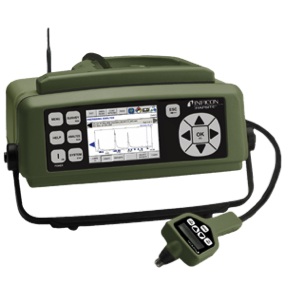June 27, 2019 -- Our next post in the Mass Spectrometry series will cover portable and in-field mass spectrometry. This includes all configurations of mass spectrometers that are person-portable, mobile, or are designed to be stationed in the field.
This does not include mass spectrometers that are designed for process or industrial applications. Person portable mass spectrometers can be carried by individuals and are operated under their own power. Mobile systems are too big and heavy to be easily portable, but may have wheels or may be mounted in a vehicle or mobile laboratory. This piece will also include in-field instruments, which may be stationed on a shipping dock or near a building or other facility. Although mobile and in-field systems might require a power source to operate, and in some cases are used in traditional laboratories, they are often quite rugged, and designed to be fairly easily relocated and set up for operation in-field.

When you imagine a mass spec, you probably picture a large device sitting on the bench. This however, is no longer always the case. Over the past few years, miniaturized mass specs have popped up in a number of places including airports, doctor’s offices, and in the hands of firefighters. These portable systems can allow for important discovery outside of the lab. In the clinical setting, the handheld MS can be put to use as a diagnostic tool to identify metabolites of drugs or biomarkers of disease. Mass spec excels at identifying unknown compounds and this can also be applied to the detection of hazardous vapor phase chemicals in the air.
The vast majority of portable and in-field mass spectrometers use either quadrupole or ion trap mass analyzers, although some use magnetic sector designs as well. Their design necessitates ruggedness in order to withstand not only moving vehicles and handling by individuals, but road shock as well. Other major considerations are weight and size, while still maintaining the analytical power for which mass spectrometry is capable. Nearly all-portable and in-field mass spectrometers utilize GC inlets, although some use direct inlet or other gas phase front-end techniques. Unlike life-science techniques, the vast majority of compounds of interest are volatile enough to be separated using gas phase techniques.
It is exciting to follow the progression of mass spec instruments. The portable mass spec devices allow for rapid chemical analyses onsite, something that years ago would not have been possible. With minimal training, individuals can provide high quality lab results in a short amount of time. This technology will continue to advance the health and safety of our planet.
What do you think?
Another article you may be interested in:
Copyright © 2019 scienceboard.net


